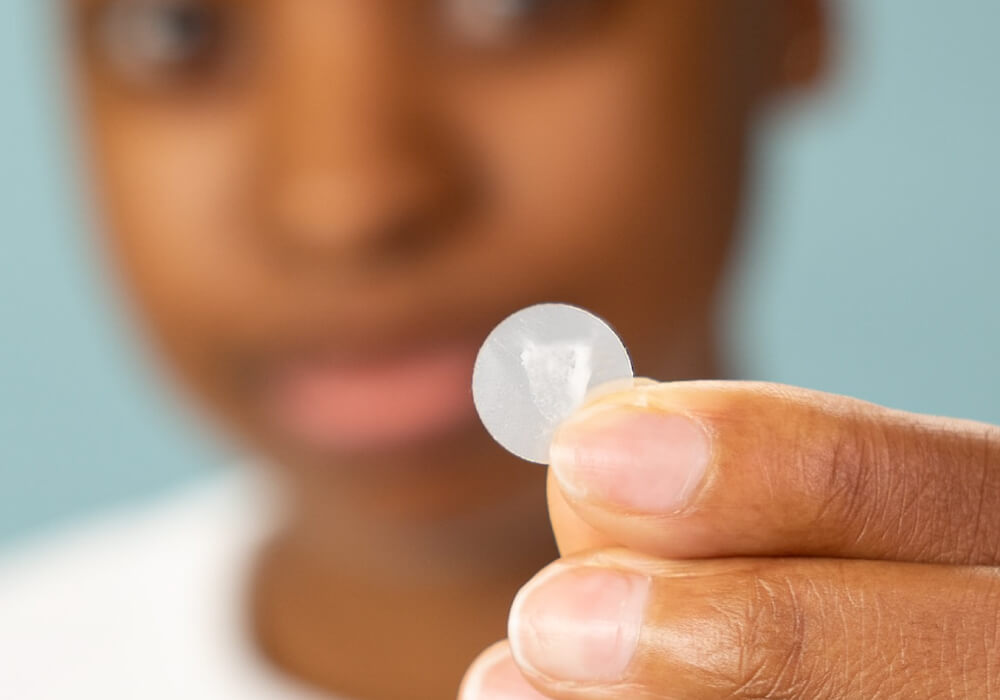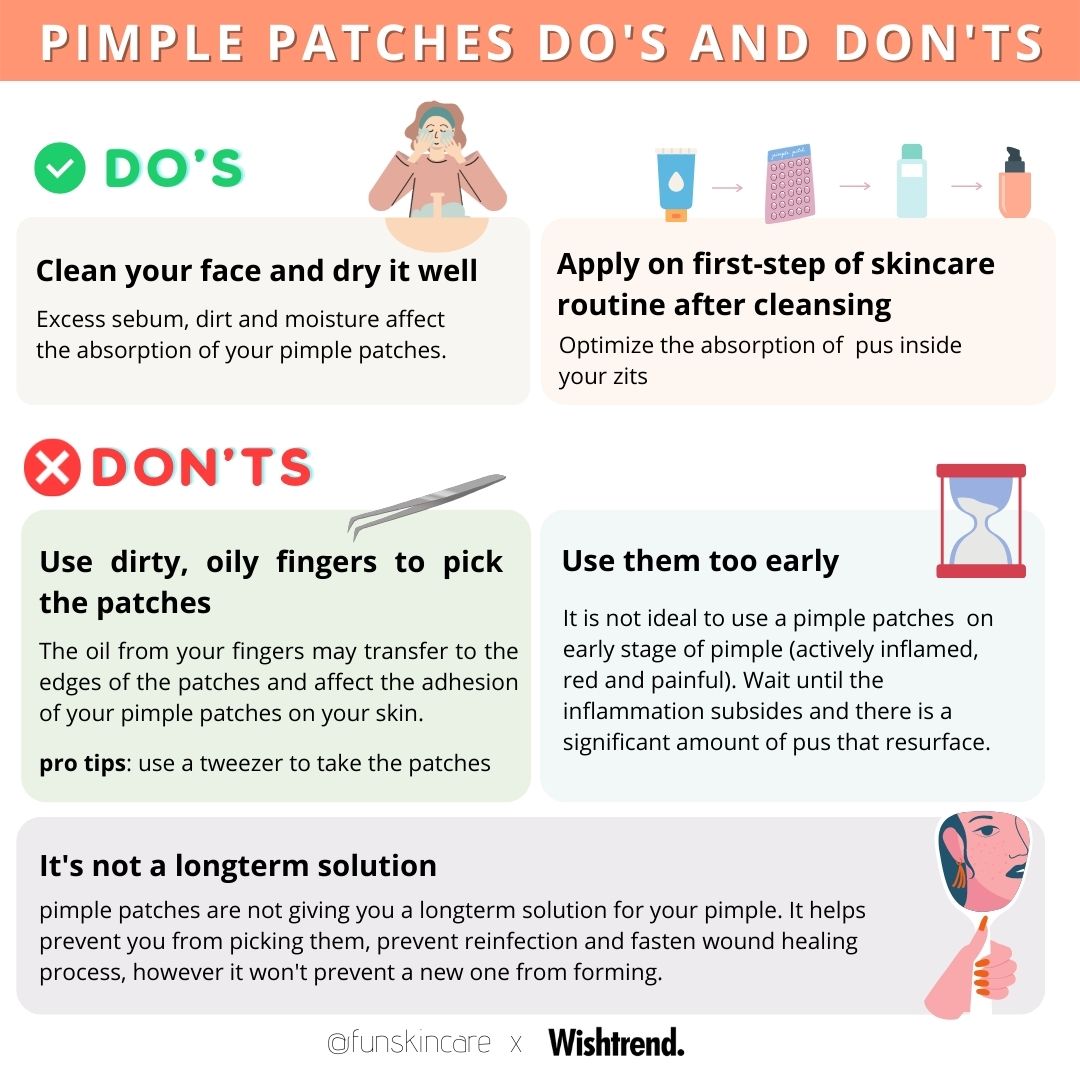You can use multiple acne patches as long as they don’t overlap on your skin. It’s typical to apply between one to three patches on separate pimples.
Acne patches, or hydrocolloid dressings, have become a popular solution for those seeking to target individual blemishes directly. Their primary function is to absorb pus and oil, reduce inflammation, and protect the area from bacteria and picking hands. These small, discrete patches are easy to apply and work best on surface-level zits like pustules.
They are a go-to quick fix for many because they are generally safe to use and can be worn overnight or throughout the day under makeup. Adhering to the manufacturer’s instructions is key to maximizing their effectiveness while maintaining skin health. Remember, always apply the patch to clean, dry skin to ensure optimal adherence and treatment efficacy.

Credit: www.facetory.com
Introduction To Acne Patches
Introduction to Acne Patches – a simple yet effective solution for those pesky pimples. These small, discreet patches are a must-have for anyone battling with acne. They are easy to use and perfect for on-the-go treatment. Let’s explore what makes these tiny warriors so popular in the fight against acne.
What Are Acne Patches?
Acne patches, also known as pimple patches, are small, round, and stick-on hydrocolloid dressings. They protect the affected area from bacteria and dirt. The patch draws out pus and fluids, promoting healing. Acne patches come in different sizes to cover various blemish sizes.
Benefits Of Using Acne Patches
- Protects the acne from external factors
- Reduces the urge to pick or pop pimples
- Absorbs pus and oil, reducing inflammation
- Speeds up the healing process
- Prevents scarring by maintaining a moist environment
Types Of Acne Patches
Struggling with acne can be frustrating. But, acne patches offer a simple solution. Knowing the types available helps you choose the right one for your skin. Let’s dive into the different types of acne patches you can use.
Hydrocolloid Patches
Hydrocolloid patches are a popular choice. They are like tiny bandages for pimples. These patches absorb pus and oil, making them perfect for those whiteheads. They protect the spot from bacteria and prevent picking. Here’s what makes them stand out:
- Protective barrier against dirt and germs
- Help reduce inflammation and redness
- Speed up the healing process
Medicated Patches
Medicated patches contain active ingredients. These ingredients fight acne directly. Common ones include salicylic acid and tea tree oil. Consider these patches if you have stubborn pimples. They offer the following benefits:
- Treat acne with active ingredients
- Often reduce pimple size faster
- Can prevent new breakouts
Microdart Patches
For deeper acne, microdart patches are the solution. They have tiny needles. These needles deliver ingredients deep into the skin. The darts dissolve and release ingredients like hyaluronic acid. Use these patches for those deep, cystic pimples. They come with advantages such as:
- Target deep-set acne
- Deliver ingredients below the skin surface
- Promote faster healing of cystic acne
Determining How Many Patches To Use
Determining the right number of acne patches to use is crucial. It ensures effectiveness and avoids waste. Your unique skin condition will guide your choice. Read on to find the best approach.
Based On Acne Severity
Mild acne may need fewer patches. This includes small, scattered pimples. Use one patch per pimple. Severe cases demand more attention. Multiple patches may be necessary. Always leave space between patches to let skin breathe.
Patch Size And Coverage Area
Patches come in various sizes. Small patches target individual pimples. Larger ones cover more ground. Assess your acne area. Match patch size to the pimple size for optimal coverage. Use a table for reference:
| Patch Size | Recommended for |
|---|---|
| Small (up to 12mm) | Single pimples |
| Medium (13mm – 25mm) | Clusters of pimples |
| Large (over 25mm) | Wide acne zones |
Choose the right size for effective treatment. Remember to avoid overlap. It can irritate the skin. Keep patch use to the affected area only.
Application Tips For Acne Patches
Waking up to a new pimple can be disappointing, but acne patches come to the rescue! These tiny wonders target blemishes, but using them correctly is key for best results. Let’s dive into how to make acne patches work magic on your skin.
Preparing Your Skin
Cleanse your face with a gentle cleanser to remove dirt and oil. Pat your skin dry with a clean towel. Ensure the affected area is free of moisturizers and makeup before applying an acne patch. A clean base helps the patch stick better and work effectively.
Proper Placement
Choose a patch that covers the entire pimple. Carefully peel the patch off its backing and place it firmly over the blemish. Press down for a few seconds to secure it. The patch should blend with your skin, becoming barely noticeable.
When To Replace A Patch
Acne patches absorb pus and oil, turning white as they work. Replace the patch when it turns opaque or every 6-8 hours. For stubborn acne, continue using new patches until improvement is visible. Always apply patches to dry, clean skin for optimal adhesion.
Can You Overuse Acne Patches?
Can You Overuse Acne Patches? Acne patches have become a go-to for battling pesky pimples. They’re easy to use and often effective. But is there such a thing as too much of a good thing? Let’s dive into whether it’s possible to overdo it with these handy blemish busters.
Risks Of Overuse
Applying too many acne patches or using them too frequently might harm your skin. Let’s explore the potential risks:
- Skin Irritation: Overusing these patches can lead to redness and irritation.
- Barrier Damage: They can strip away essential oils, weakening the skin’s barrier.
- Delayed Healing: Excessive use may slow down the natural healing process.
Signs Of Excessive Use
Be on the lookout for these warning signs that you might be overdoing it:
- Increase in Redness: If redness around the patch grows, you’re using too many.
- Peeling Skin: Notice peeling? Give your skin a break from the patches.
- New Irritation: If new areas of irritation appear, reduce patch usage.
:max_bytes(150000):strip_icc()/starface1-a6e5647e2db44ed9af1270fa2063fe8f.jpg)
Credit: www.byrdie.com
Maximizing The Effectiveness Of Acne Patches
Acne patches are a popular skin care solution for targeted acne treatment. They work by absorbing pus and reducing inflammation. Yet, for best results, it’s crucial to use them properly. This means understanding how many to use and when. Let’s explore how to maximize their effectiveness.
Combining Treatments
Using acne patches with other skin care products may boost their power. Below are some tips:
- Cleanse your skin before applying a patch to remove dirt and oil.
- Use non-comedogenic moisturizers to avoid clogging pores.
- Apply acne treatments on other face areas if needed.
Remember to check with a dermatologist before combining treatments.
Lifestyle Factors Affecting Acne
Your lifestyle can impact acne and the effectiveness of treatments. Consider these factors:
| Lifestyle Factor | Impact on Acne |
|---|---|
| Diet | Eating less sugar and dairy may help reduce breakouts. |
| Stress | High stress can increase acne severity. |
| Sleep | Getting enough sleep helps in skin healing and regeneration. |
| Hygiene | Regularly changing pillowcases and towels can prevent bacteria spread. |
Adjusting these factors might reduce the need for multiple acne patches. Aim for a balanced lifestyle for clearer skin.
Common Questions About Acne Patches
Acne patches are popular but many have questions. Let’s explore some common concerns.
Can Patches Cause Scarring?
No, acne patches do not cause scarring. They are designed to protect the acne spot from bacteria and dirt. This reduces the risk of infection and inflammation, which are the real culprits behind scars. By absorbing pus and reducing inflammation, these patches can actually prevent scarring.
Are Patches Suitable For All Skin Types?
Acne patches are generally safe for all skin types. However, those with sensitive skin should be cautious. Here’s a quick guide:
| Skin Type | Suitability | Precaution |
|---|---|---|
| Oily | Highly Suitable | Use as directed |
| Dry | Suitable | Moisturize area around patch |
| Sensitive | Use with Caution | Test on small area first |
Always choose hypoallergenic and non-comedogenic patches to avoid irritation and clogged pores.

Credit: www.herocosmetics.us
Frequently Asked Questions
Can You Use Multiple Pimple Patches?
Yes, you can use multiple pimple patches as long as they don’t overlap. Place them on individual pimples to reduce inflammation and promote healing. Always follow the product instructions for optimal results.
Can You Overuse Pimple Patches?
Yes, overusing pimple patches can irritate the skin. Follow the instructions on the packaging and allow your skin to breathe between applications. Limit their use to when a pimple is at its peak.
How Long Should You Wait Between Pimple Patches?
Wait at least 24 hours between pimple patches to allow your skin to breathe and recover. Monitor your skin’s response and adjust accordingly.
Do You Pop A Pimple Before A Patch?
No, do not pop a pimple before applying a patch. Popping can cause inflammation and scarring. Let the patch work on the intact pimple.
Conclusion
Navigating the use of acne patches doesn’t have to be a puzzle. The key takeaway is moderation; use just enough to cover your blemishes. Always follow the product instructions and listen to your skin’s response. Finding your perfect balance will help clear your skin effectively and safely.
Remember, your skin’s health comes first!

